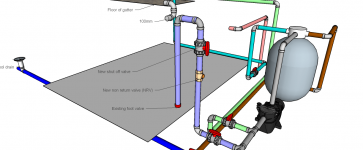I live in a condominium that faces the Indian Ocean. I have somehow got involved with oversight of our pool on the eighth floor. Previously I asked about replacing sand in the filter. Answers helped support exposure of a pervasive scam. This has more to do with a development where owners have to create documentation and find and expedite solutions.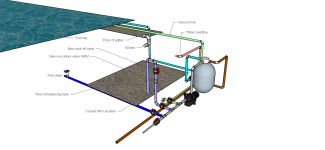 The questions:
The questions:
No one knew a foot valve existed since it was located close to the bottom of the very dark balancing tank
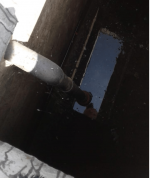
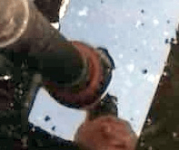
at the end of the medium blue pipe as shown in the sketch. The location and inverted U pipework was obviously considered. Have we missed something?
Anyway the pool water is drawn into the balancing tank when the pump is off, so we are thinking of installing a new one with an extra shut off valve on the open pump area side of the tank wall to facilitate inspection and replacement.
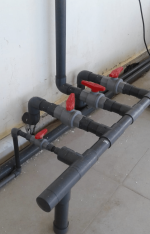
Two questions then: Is this best location/configuration? What features should we look for in valves that might be available in Sri Lanka?
The level of the overflow has been raised with a standpipe from half way up to close to the top of the tank. We think this is wrong as the outlet from the gutter is 100mm and the overflow 50mm diameter. When it rains here, it comes fast and plentiful. Should we remove the standpipe?
 The questions:
The questions:No one knew a foot valve existed since it was located close to the bottom of the very dark balancing tank


at the end of the medium blue pipe as shown in the sketch. The location and inverted U pipework was obviously considered. Have we missed something?
Anyway the pool water is drawn into the balancing tank when the pump is off, so we are thinking of installing a new one with an extra shut off valve on the open pump area side of the tank wall to facilitate inspection and replacement.

Two questions then: Is this best location/configuration? What features should we look for in valves that might be available in Sri Lanka?
The level of the overflow has been raised with a standpipe from half way up to close to the top of the tank. We think this is wrong as the outlet from the gutter is 100mm and the overflow 50mm diameter. When it rains here, it comes fast and plentiful. Should we remove the standpipe?
Last edited:



